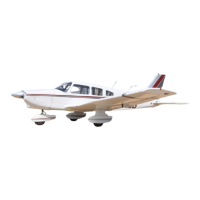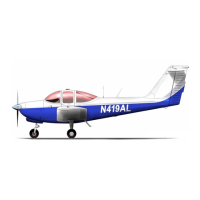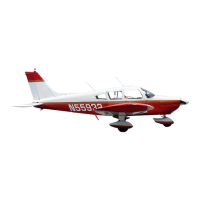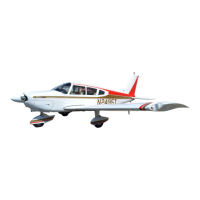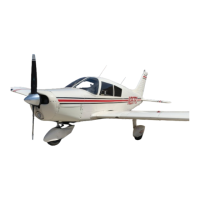THE NEW PIPER AIRCRAFT, INC.
PA-32-301FT / 301XTC
MAINTENANCE MANUAL
PAGE 16
Jun 1/03
4D20
51-00-00
B. Conditions Affecting Corrosion
Some conditions which affect the occurrence of corrosion are:
(1) Heat and humidity increase corrosion.
(2) Different metal and their relative sizes affect resistance or susceptibility to corrosion.
(3) Frequent contributing factors to corrosion are:
(a) Soil and atmosphere dust.
(b) Oil, grease and exhaust residues.
(c) Salt water and salt moisture condensation.
(d) Spilled battery acids and caustic cleaning solutions.
(e) Welding, brazing and soldering flux residue
A clean aircraft will resist corrosion better than a dirty one. Cleaning frequency depends on several
factors (such as geographical location, type of operation, etc). Soil should be removed as soon as
possible, especially when it is on a high temperature area.
After cleaning, ensure that no cleaning solution remains in any holes, crevices or joints, as it may
lead to increased corrosion. Also, all exposed areas (landing gear, flap tracks, control surface, hinge
parts, etc) should be lubricated after cleaning.
CHART 2
TYPES OF METAL CORROSION
Type of Material Type of Corrosion Remedy**
Steel Rust* Complete removal of
corrosion by mechanical
means.
Aluminum White to grey powdery material. Mechanical polishing or
brushing with material
softer than aluminum.
Magnesium (highly susceptible White powdery snow-like
to corrosion) mounds and white spots.
Cadmium (plating) White to brown to black Mechanical removal of
mottling of surface (plating corrosion should be limited
is still protecting until iron to metal surfaces from
appears). which the cadmium has
been depleted.
Chromium (plating) May pit in chloride Promotes rusting of steel
environment. where pits occur in the
coating.
* Red rust generally shows on bolt heads, hold-down nuts and other aircraft hardware. Its presence in
these areas is generally not dangerous. However, it is indicative of a need for maintenance and also of
the possibility of corrosive attack in more critical areas. Any corrosion on the surface of a highly
stressed steel part is potentially dangerous. A careful removal of corrosion products using mild
abrasives (rough or fine grit aluminum oxide paper) is necessary, using care not to overheat the metal
when removing the corrosion.
** For abrasion, do not use dissimilar material (i.e. steel wool on aluminum). Remove only the material
required to clean up the affected area.
